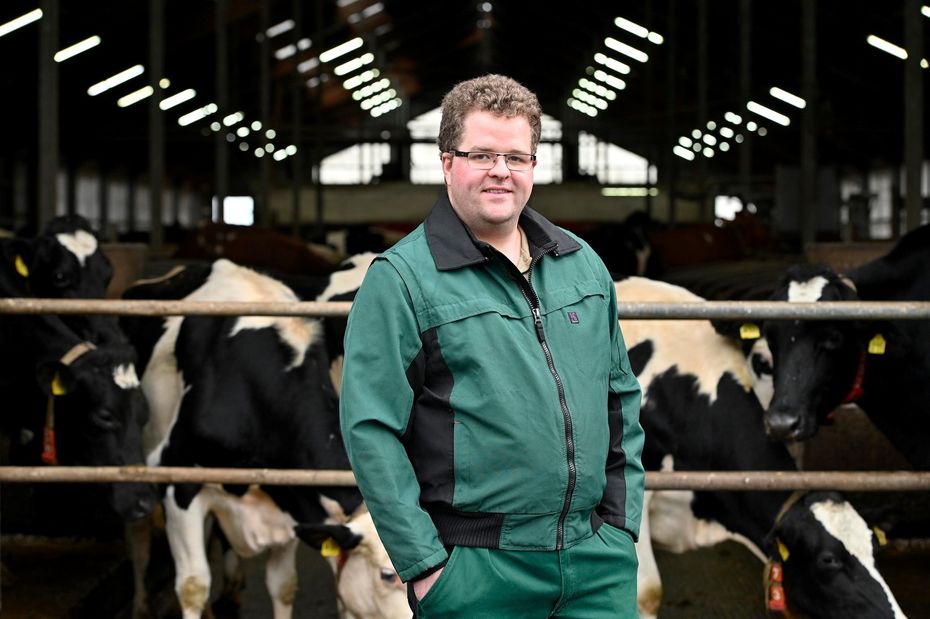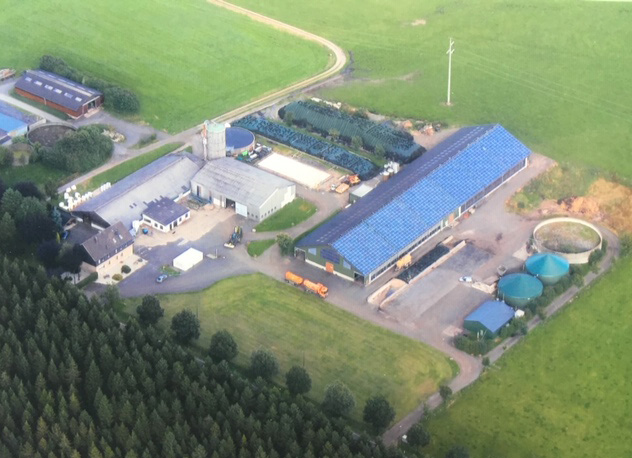We have a solution for most problems
Interview with dairy farmer Mirko Graff about future-oriented milk production
Mirko Graff has held a DLG (German Agriculture Society) membership for 10 years and participated in a five-days-visit to Israel in 2020 organised by DLG
Mirko Graff, which developments change the framework conditions for dairy farming the most?
Mirko Graff: In dairy farming, we are currently mostly affected by constantly changing requirements concerning animal, environmental and climate protection. We are exposed to the pressure that now requirements are changing faster than before. We have to meet them by securing that they are reasonable as well as scientifically proven.
God knows, we do not do everything right in dairy industry, but we take important steps to improve it. One requirement is, for example, to leave calves with the cow for five days. However, scientific evidences indicate that this practice leads to a closer bond results in a painful separation of the cows. You do not want that either. We are happy to implement one of the two, but both cannot be done at the same time.
Currently, three topics are dominating public discussions: the CO2-footprint, nutrient loads into groundwater and animal welfare. We work on all three points on our farm. As far as nutrients are concerned, thanks to our biogas plant we have an absolutely closed cycle. In terms of animal welfare, we have relatively large, open and airy stalls now, but a continuous improvement on this topic is required.
People would like to have minimum standards for milk production, for instance: how cows should be kept, how clean they should be, how much water, light and space to move they should have. These are simple animal welfare criteria, that are, in our opinion, an absolute must. AS for standards, leading dairy farmers go one step further. From an agricultural perspective this is the right way to go. We pick up what has been asked for and, as producers, consider carefully what could be improved and what makes sense. We have a solution for most problems. But then it must also be clear that this costs money.
How do you assess the future of milk production in Germany – Producing export commodities and supplying domestic discount shops or producing dairy products complying with higher environmental and animal protection standards?
Graff: In the medium and long term, I see the only way in producing quality products, meaning definitively not commodities. Only high-quality products bring us forward.
Cheap goods are not the only way to enter export markets. Consumers, who want to buy quality products and are willing to pay for them might live in the Middle East, Asia or anywhere else. People abroad, who can afford such products now and in the future, are demanding for more than minimum-standard goods, they want quality products. In this regard it does not matter whether the products are already packed and exported or whether a ready-to-use powder is produced that contains everything needed to produce high-quality cheese or yoghurt on site. This is exactly what is currently being done with our milk. This is the way forward for both, our company and our dairy: manufacturing less commodities, regardless whether on domestic or export markets.
But all of this has to be paid for. The quality that we deliver must be reflected in the price. Thus, you might say goodbye to one or other market. Just „getting cheaper and cheaper“ is no longer possible.
How do you develop your milk production in the changing environment?
Graff: Ultimately, everybody has to go his own way. We have decided to join the cooperative dairy called Arla, where we find our interests and where we have influence. Consequently, as a member of Arla cooperative, we have to deliver in accordance to our programmes. Then I have to accept that someone from the dairy is visiting my farm on short notice to check randomly whether or not I fulfill our self-imposed tasks. If everything is set up properly, the results of the checks give me some advice for my farm, for instance about claw health or cleanliness. Then I can start thinking: it is a current issue, because there might be diarrhea in the herd, or did I basically something wrong. Well, then I must work against it and improve it. When I ask for something, then I have to deliver. And only then I can say: dear citizen, please pay for it.
In the well-known German animal welfare programmes, certain facts are specified for every animal and every type of husbandry which are obligatory for farmers. On our farm, we not only adhere to the basics, but we go one step beyond. This is part of a quality program at our dairy that we implemented in 2020. It covers everything in the field of milk production– from hygiene during milking, milk storage up to general topics like how to keep cows or requirement of producing of basic feed. The dairy industry thus provides an absolutely seamless audit system. This high standard must be put on the market by the sellers.
Where do you see Germany as an agricultural location in 10 – 15 years?
Graff: Milk will definitely continue to be produced in Germany in the future. I am convinced that, in general, every production will remain in its favoured regions. Crop production will not gain a foothold on our site, this is the place for cows. Northern Europe is absolutely suitable for milk production in terms of weather, possibilities, the know-how and infrastructure. Many other regions in the world cannot or become unfit for it.
We are doing well these days. Let´s have a look at the CO2-footprint expressing how much CO2 is used to produce one liter of milk. This is around 2.5 kg CO2 per liter on average worldwide. In Northern Europe it is 1.1 kg per liter and our company has reached 1.0 kg per liter. This shows that many milk-producing regions in the world do not meet this standard to the same extent as we do, the same applies to people´s demand as we talked about earlier. This is just one example why I believe milk production definitely has a future here in Germany – not at every location, but on a large scale.


